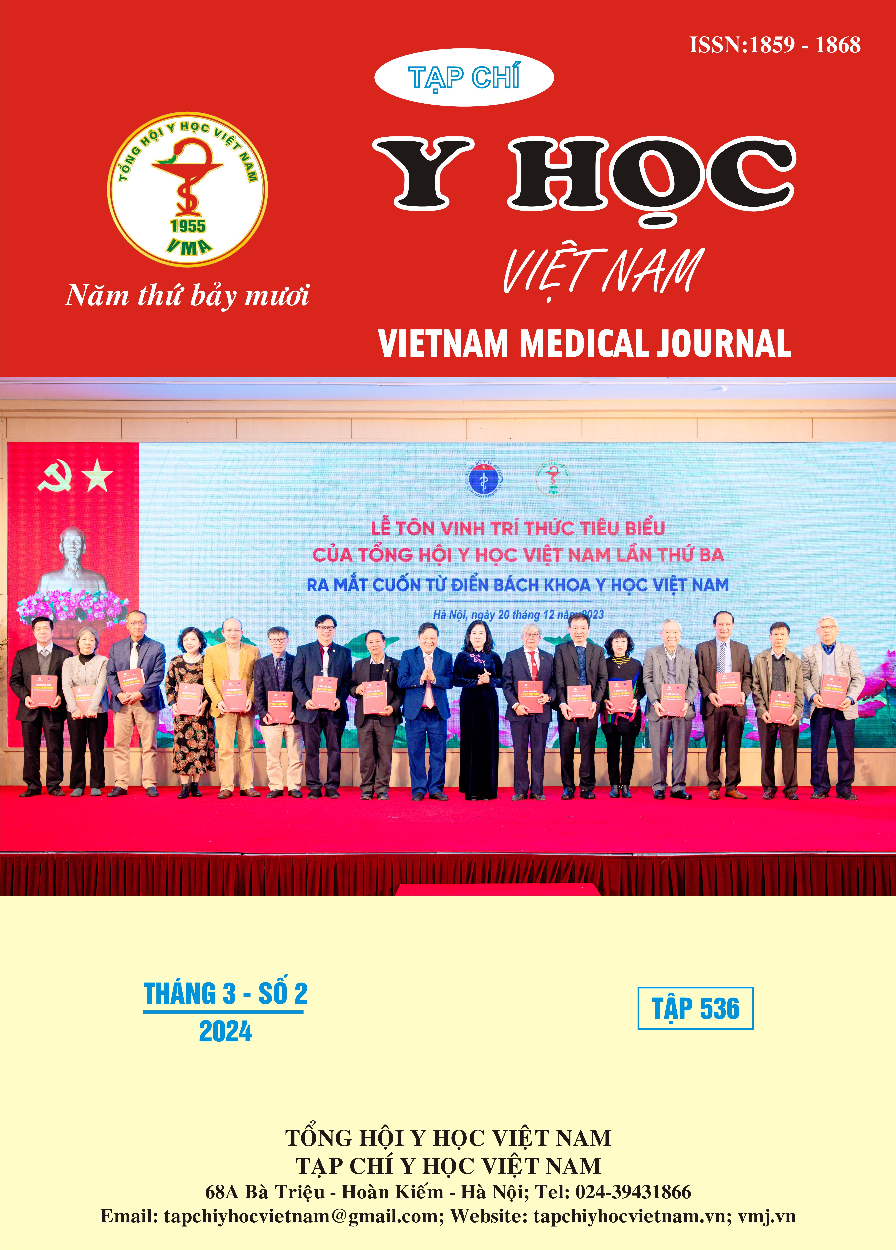COMPARISON OF G-FAST AND PASS SCALE IN PREDICTING LARGE ARTERY OCCLUSIONIN IN PATIENTS WITH ISCHEMIC STROKE
Main Article Content
Abstract
Backgrounds: Endovascular mechanical thrombectomy is a treatment method for acute ischemic stroke caused by large artery occlusion. The availability of this treatment varies across medical facilities, and the success of the procedure depends on timing. Early identification of the risk of large artery occlusion in stroke patients is crucial for optimizing treatment outcomes. Objectives: To compare the sensitivity, specificity, and accuracy of two scoring systems, G-FAST and PASS, in predicting large artery occlusion. The research involved 142 patients admitted to Nghean Friendship General Hospital between September 2021 and May 2022. The patients were diagnosed with ischemic stroke, aged 18 and above, underwent brain imaging, and had symptom onset to hospital admission time of less than 6 hours. The G-FAST and PASS scores were assessed upon admission before reperfusion therapy. Results: Among the 142 patients with acute ischemic stroke, 65 had large artery occlusion, while 77 did not. The average age was 66.8 ± 11.88, with 66.2% being male. PASS showed a sensitivity of 64.6%, lower than the sensitivity of G-FAST at 81.5%, and a specificity of 90.9%, higher than the specificity of G-FAST at 27.3%. The AUC (Area Under the Curve) of PASS was 0.781 (p < 0.001), higher than the AUC of G-FAST at 0.579 (p = 0.039). Conclusions: PASS demonstrates better discriminative ability than G-FAST. In clinical practice, alongside symptom onset time and estimated transport time to the nearest stroke center, identifying the risk of large artery occlusion in suspected stroke patients plays a crucial role in selecting treatment facilities and deciding transportation strategies. Further research is needed to evaluate the accuracy of the two scoring systems.
Article Details
References
2. Nguyen Huy Thang, Gall Seana, Cadilhac Dominique A, Nguyen Hoang (2019), Processes of stroke unit care and outcomes at discharge in Vietnam: findings from the Registry of Stroke Care Quality (RES-Q) in a Major Public Hospital, Journal of Stroke Medicine. 2(2), pp. 119-127.
3. Study Group National Institute of Neurological Disorders and Stroke rt-PA Stroke (1995), Tissue plasminogen activator for acute ischemic stroke, N Engl J Med. 333(24), pp. 1581-1587.
4. Campbell B. C., Meretoja A., Donnan G. A., and Davis S. M. (2015), Twenty-Year History of the Evolution of Stroke Thrombolysis With Intravenous Alteplase to Reduce Long-Term Disability, Stroke. 46(8), pp. 2341-2346.
5. Bhatia R., Hill M. D., Shobha N., Menon B. (2010), Low rates of acute recanalization with intravenous recombinant tissue plasminogen activator in ischemic stroke: real-world experience and a call for action, Stroke. 41(10), pp. 2254-2258.
6. Mai Duy Ton, Dao Xuan Co, Luong Ngoc Khue, Nguyen Trong Khoa (2022), Current State of Stroke Care in Vietnam. Stroke: Vascular and Interventional Neurology. 2(2), p. e000331.
7. Duvekot M. H. C., Venema E., Rozeman A. D., Moudrous W. (2021), Comparison of eight prehospital stroke scales to detect intracranial large-vessel occlusion in suspected stroke (PRESTO): a prospective observational study, Lancet Neurol. 20(3), pp. 213-221.
8. Nguyen T. T. M., van den Wijngaard I. R., Bosch J., van Belle E. (2021), Comparison of Prehospital Scales for Predicting Large Anterior Vessel Occlusion in the Ambulance Setting, JAMA Neurol. 78(2), pp. 157-164.


